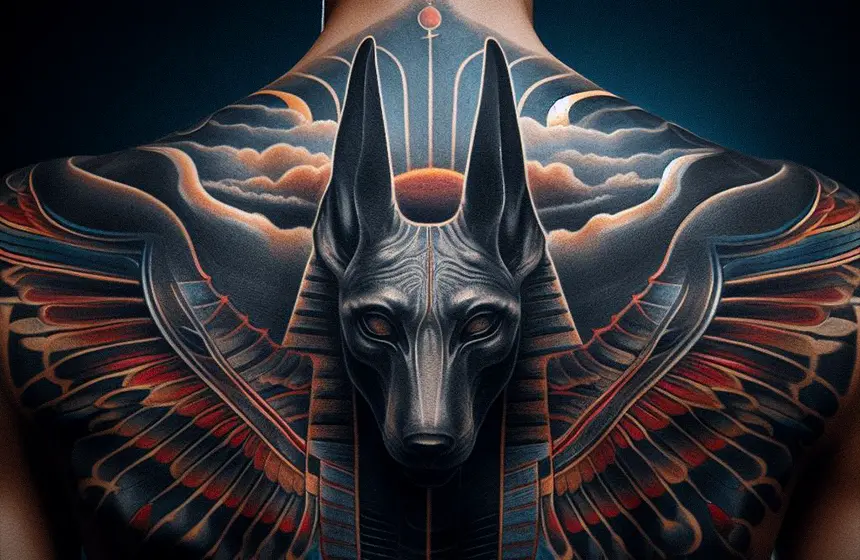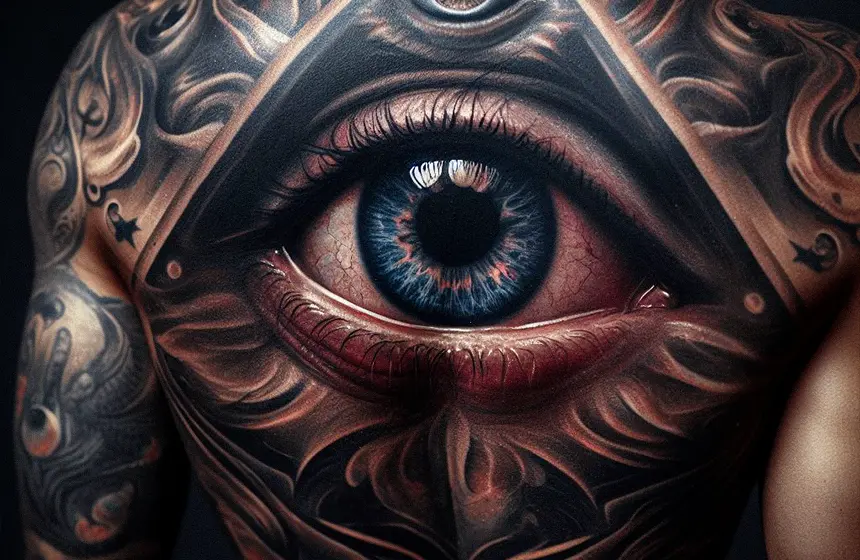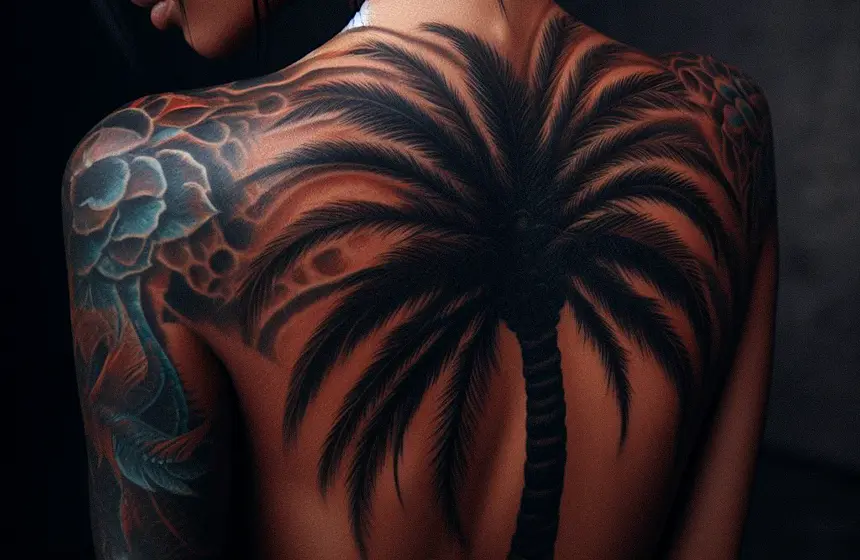Hey there, I’m your inked-up guide on this thrilling tattoo journey.
How to Prepare for a Tattoo?
I’ve been in your shoes, feeling that cocktail of anticipation, excitement, and, yes, a dash of fear.
I’m here to help. Together, we’ll navigate through preparation, artist communication, tattoo etiquette, and post-tattoo care. Ready to make your tattoo experience as smooth and memorable as possible?
Table of Contents
Key Takeaways
- Get a good night’s sleep and inform your artist if you didn’t sleep well.
- Stay hydrated by drinking plenty of water before the appointment.
- Shower and shave the area leading up to the tattoo session.
- Eat a balanced meal, wear comfortable clothing, and avoid alcohol and drugs before the session.
Preparing Your Body and Skin

Before getting inked, I must prepare my body and skin to ensure a smooth tattoo session. I kickstart the process by getting a good night’s sleep. It’s crucial to stay mentally alert and present during the session, and a well-rested body aids this.
I then focus on hydrating and drinking plenty of water 24 hours before the appointment. A well-hydrated skin absorbs ink better, guaranteeing a smoother process for the artist. I also take a shower before the session, keeping my skin clean.
Shaving the area regularly, exfoliating, and moisturizing are also part of my prep routine. However, I avoid moisturizing on the actual day to prevent any issues with the needle and ink. Proper preparation sets the stage for an efficient and satisfying tattoo session.
Nutrition, Comfort, and Precautions
After setting up my skin for the tattoo, I focus on my nutrition and comfort, taking precautions to ensure a smooth process. A well-nourished body can handle the stress of a tattoo session, so I eat a complete, balanced meal beforehand. Snacks are also a must-have for longer sessions.
Comfort-wise, I go for loose, soft clothing, allowing the tattoo artist easy access to the skin. It’s crucial to remember not to arrive under the influence of any substance or with skin injuries, as this can lead to complications.
| Nutrition | Comfort & Precautions |
|---|---|
| Balanced meal | Wear loose clothing to avoid irritation |
| Snacks | Avoid intoxication for better healing |
| Hydration | Promotes healthy skin and helps in the healing process |
Optimal preparation ensures a seamless tattoo experience.
Effective Artist Communication
It’s now time for me to engage in effective communication with my tattoo artist. This step is as crucial as the physical preparations. I start by sharing my tattoo ideas, their story, and what they mean to me. I’m not shy about expressing my vision with raw emotion. After all, it’ll be etched onto my skin forever. I listen, too. My artist’s experience is invaluable; their input can refine my concept, making it more viable or visually compelling. I also discuss my skin condition, allergies, and pain tolerance.
Open, honest communication fosters trust, eases the process, and ultimately helps us create a masterpiece together.
Tattoo Etiquette and Entertainment
Keeping in mind the importance of open communication with my artist, I now focus on understanding proper tattoo etiquette and considering ways to entertain myself during the session. It’s vital to respect the artist’s space and work, so I make a mental note to keep my hands off their workstation.
Cancelling at the last minute is more than rude; it also disrupts the artist’s schedule.
On the entertainment front, I’ll bring headphones and a device to watch Netflix or listen to music. However, I’ll ensure my entertainment doesn’t interfere with the artist’s workflow. Ultimately, it’s about balancing keeping myself amused and ensuring I’m not hindering the artist’s creative process. Good manners and consideration go a long way in ensuring a smooth tattoo session.
Bringing Companions and Inquiring
As we continue our journey on tattoo preparation, let’s chat about the role of companions and the art of asking the right questions. It’s not just about who you bring, but also understanding the policies of the tattoo studio about visitors. Necessary, too, is the courage to inquire, as your artist is a well of knowledge waiting to be tapped.
Choosing Supportive Companions
In terms of bringing along supportive companions to my tattoo appointment, I’ve realized it’s essential to choose wisely. The right company can make the experience less stressful and more enjoyable. It’s not just about having someone to chat with or hold my hand during the process; it’s also about having someone who respects the tattoo artist’s space and rules and can provide emotional support when needed.
| Positive Traits | Negative Traits |
|---|---|
| Calm and patient | Restless or disruptive |
| Respectful of the artist’s space | Intrusive or disrespectful |
| Emotionally supportive | Overly critical or judgmental |
| Understands the process | Ignorant or uninterested |
Choosing the right companion for a tattoo appointment can significantly influence the overall experience, making it a memory to treasure rather than a moment to endure.
Understanding Studio’s Visitor Policies
Before heading to my tattoo appointment, I’ll familiarize myself with the studio’s visitor policy to know how many companions I can bring and what kind of questions are encouraged.
-
Visitors
- Most studios allow one companion to provide emotional support. It’s crucial to check beforehand to avoid any inconveniences.
- Studios discourage large groups due to space constraints and to maintain a calm environment.
- Children
- Some studios may not allow minors due to explicit art or mature themes. It’s best to inquire ahead.
-
Inquiring
- Studios appreciate clients who ask insightful questions, showing their interest and respect for the craft.
- It’s okay to ask about the tattoo process, safety protocols, and any other concerns you may have. Communication is critical for a positive tattoo experience.
Importance of Questioning Artist
While it’s crucial to understand the studio’s policies on bringing companions, it’s equally important not to hesitate to question the artist about any aspect of the tattoo process I’m unsure about.
Clarity and communication are essential. It is vital to inquire about the artist’s experience, the techniques they’ll use, and the healing process. If I bring a companion for emotional support, I discuss it with the artist beforehand. A collaborative environment is essential for a successful tattoo session.
Post-Appointment Care and Wrap-up
After getting your tattoo, it’s crucial to follow a few essential steps for the aftercare process. This ensures your fresh ink heals beautifully and maintains its vibrant colour. Here are some key points:
-
Cleanliness:
- Gently clean the tattoo with mild soap and warm water.
- Pat it dry, don’t rub.
-
Moisturizing:
- Apply a thin layer of tattoo-specific lotion.
- Avoid petroleum-based products.
-
Protection:
- Keep it out of direct sunlight.
- Avoid submerging it in water.
Frequently Asked Questions
-
What Is the Best Time of the Day to Get a Tattoo?
There’s no absolute best time for everyone, but mornings work well. I’m fresh and alert, and my pain tolerance is higher. Though, it truly depends on your schedule and energy levels.
-
Can I Take Painkillers Before the Tattoo Session to Minimize the Pain?
I wouldn’t recommend taking painkillers before a tattoo session. They can thin your blood, which might cause more bleeding. It’s best to consult with your artist or a healthcare provider for safe options.
-
Is It Safe to Receive a Tattoo if I Have a Skin Condition Like Eczema or Psoriasis?
As an experienced tattoo artist, I’d advise caution. Eczema or psoriasis could affect the healing process of a tattoo. Consult your dermatologist before getting inked.
-
How Often Do I Need to Touch Up My Tattoo to Keep It Looking Fresh?
I’d recommend touch-ups every few years to keep your tattoo vibrant. It’s not a hard rule, though. Exposure to sunlight, skin type, and tattoo quality all factor into how often you’ll need a touch-up.
-
What Kind of Reactions or Allergies Can Occur From Tattoo Ink?
In my experience, tattoo ink can cause allergic reactions like itchiness, rashes, or swelling. Some folks might even experience granulomas or keloids. It’s rare, but severe reactions can occur with specific ink colours.
Conclusion
And there you have it, my friend. This tattoo journey may seem daunting, but remember, it’s all part of the beautiful process. Feed your body well, comfort yourself, and communicate openly with your artist. Respect their space, bring a buddy, and be diligent with aftercare. Your body is a canvas. Let’s make it a masterpiece. Now, go forth and embrace this exciting adventure with confidence and joy. You’ve got this!





